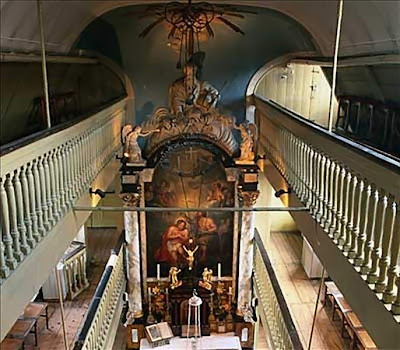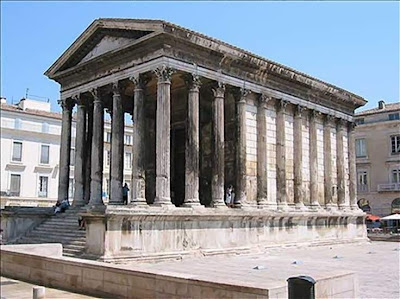These 15 attractions are unlikely to pop up on the guidebook trail – that doesn’t make them any less alluring Basilica of St Denis
Paris, FranceA grand gothic cathedral, a royal burial site and a medieval place of pilgrimage,
the Basilica of St Denis has all the ingredients of a tourist hotspot. Nevertheless, this 12th-century site eludes most tourists, and is constantly plays second fiddle to the more famous Notre Dame.
Despite being raided in the French Revolution, it retains many treasures including ornate effigies. And it's even the subject of a grisly legend surrounding its martyred namesake, a bishop who is said to have wandered there while holding onto his decapitated head.
Berlin Flak Tower
Berlin, GermanySet in Berlin's Humboldthain Park,
the Berlin Flak Tower is the only one to have survived the second world war. One of three such towers built under Hitler's rule, this seven-storey bunker protected Berlin from allied air attacks as well as being used as a massive bomb shelter. Partially restored, visitors are allowed entry to two of its intriguing levels.
Amstelkring Museum
Amsterdam, NetherlandsDuring the period in which Catholics were persecuted in the Netherlands many people were forced to take drastic measures to preserve their faith. The result of one such endeavour is the
Amstelkring Museum in Amsterdam, which features a dramatic hidden chapel, locked away in the heart of the city. Built in 1663, this secret chamber was capable of seating up to 150 people and served as a centre of Catholic worship in the city for 200 years.
Ostia Antica
Rome, ItalyRome's iconic ancient sites are some of the most famous in the world, and so unfortunately they are also some of the most crowded. Yet jump on a train from the capital and within just half an hour, you're likely to find you've got an entire Roman settlement mostly to yourself.
Dating back to the fourth century BC,
Ostia Antica was a port town that acted as the gateway to Rome. Eventually abandoned and now located inland, this picturesque site is brimming with well-preserved ruins - from shops and warehouses, to homes, a theatre, baths and even a military camp. As you wander through ancient cobbled streets with nary a camera flash or tour guide in sight, you'll find the peace and quiet needed to really contemplate 2,000 years of history.
Schoenenbourg Maginot Line Fort
Schoenenbourg, France Built with the most advanced military hardware of its age, entirely self-sufficient and heavily garrisoned, the formidable Maginot Line was constructed in the 1930s to defend France against the Germans.
It would've been a roaring success, except Hitler invaded France through Belgium, meaning these dramatic defences were rendered impotent almost overnight. The largest of the defensive forts is in
Schoenenbourg (near Strasbourg) and is a virtual time capsule. There is plenty to explore in the underground complex, including bunkers, tunnels, armaments, barracks and even a hospital.
Segovia Aqueduct
Segovia, Spain (near Madrid)Measuring a staggering 300 metres in length and with two-storey granite archways that rise majestically towards the sky,
the Segovia Aqueduct is one of Spain's - if not Europe's - most stunning historic sites. Yet, despite its breathtaking beauty and UNESCO heritage status, this second-century structure remains underrated and largely off the tourist path. This is all the more bewildering given that Segovia is within easy reach of Madrid, just a short half-hour hop by train.
Hadrian's Villa
Tivoli, Italy (near Rome)Russian oligarchs and WAGs would find stiff competition with this example of the astounding excesses of the Roman Empire's leaders - Hadrian's Villa. Known as
Villa Adriana, this vast second-century complex on the outskirts of Rome was the palatial seat of power for Emperor Hadrian.
Including libraries, monuments, a theatre and a swimming pool amongst other features, the scale of this sprawling 250-acre estate is stupendous.
Crypte Archeologique
Paris, FranceMillions walk past its entrance every year, yet few realise that this ancient treasure lies just beneath their feet. Overshadowed by the iconic Notre Dame Cathedral and signposted only by an unassuming staircase,
this archaeological crypt contains the incredible remains of Gallo-Roman Paris.
Here, the streets, buildings and fortifications of this once thriving settlement unfold, from the initial occupation of the area by the Celtic Parisii tribe through to Roman times and beyond. Offering a rare glimpse into Paris' ancient past, this ambient underground museum provides something very different for those exploring this spectacular city.
Kerameikos
Athens, GreeceYou could join those huffing and puffing their way up to the Acropolis, or you can have a much calmer experience nearby at
these impressive ruins ranging from the prehistoric to Roman. When the Greeks built the Themistoclean wall to ward off an attack by the Spartans in 478BC, this ancient cemetery and one-time residence of the city's potters remained on the outside.
Must-sees at this site include the famous Sacred and Dipylon Gates as well as the Pompeion, the latter having been the staging area of a legendary Athenian festival known as the Panathenaic procession.
La Maison Carrée
Nimes, FranceOutside Rome there are few ancient Roman buildings so well preserved as
La Maison Carrée. Dating back to the reign of Augustus, this was the work of Marcus Vipsanius Agrippa, the man behind Rome's Pantheon. Translated as the "Square House", this beautiful shock of ancient architecture in Nimes' streets has survived the centuries by being used as everything from a church to a stable. Stroll by and admire from the outside or venture inside to its small museum.
Merida
Near Badajoz, Spain
Merida's wealth of ancient wonders warrants a visit for them alone. A Roman temple, circus, amphitheatre, baths, an aqueduct and bridge are just some of the remarkable remnants of the Roman colony of Augusta Emerita, founded in 25BC. Beautifully preserved, UNESCO has described Merida as "one of the finest surviving examples" of Roman town design.
The Pantheon
Paris, FranceParis'
Pantheon isn't entirely ignored by tourist guides, but it remains surprisingly quiet. Found on the left bank of the Seine, this magnificent site was meant to be a church, but it ended up being a mausoleum for the likes of Zola and Voltaire. Built under King Louis XV and finished at the start of the French revolution, it was inspired in part by the Roman temple of the same name. For those who don't fancy the prospect of strolling through the crypt, this site still has the powerful draw of stunning architecture and remarkable decoration.
Burg Rheinfels
St Goar, GermanyCombine a medieval version of a toll booth with a commanding fortification and ta da! You get the dramatic castle of Burg Rheinfels. This structure was first used from the 13th century to levy a charge on passing ships along the Rhine, but this policy proved so unpopular it promptly caused a mass riot and a siege. Today, the site of
Burg Rheinfels is like a historic playground, mixing pretty ruins with fascinating tunnels and an informative museum.
Civita di Bagnoregio
Bagnoregio, ItalySeemingly marooned in the hills and valleys of Italy's Lazio region,
this perfectly preserved medieval town was once part of the Papal States. One of its main highlights is the 'Eutruscan Corridor', a stunning tunnel built by its first inhabitants. Increasing seismic activity has meant this dying town is doomed to disappear, with the only remaining means of access being via a picturesque footbridge.
Aquincum
Budapest, HungaryFrom glorious Buda Castle to phenomenal churches and museums, Budapest has plenty to shout about. But, while these celebrated landmarks make it one of Europe's prettiest cities, few remain in their original guise, having been the subject of everything from natural disasters to devastating fires.
Yet, those who go beyond the usual tourist route can see a side of the city that has remained the same for centuries. Still within the city boundaries, the large Roman site of Aquincum features the ruined remains of homes, temples, cemeteries and even an amphitheatre, many of which date back to the second century AD. For an even more obscure site of note, try the Budapest Bath Museum, the roadside remains of a Roman military baths complex nearby.








 08:35
08:35
 C 777
C 777











 Posted in:
Posted in: 
























































